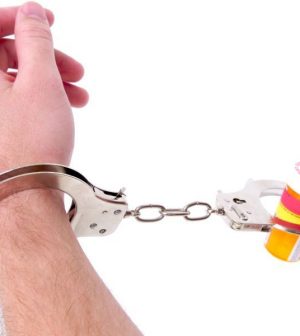- Navigating Your Midlife Crisis: Embracing New Possibilities
- City Raccoons Showing Signs of Domestication
- Mapping the Exposome: Science Broadens Focus to Environmental Disease Triggers
- One Week Less on Social Media Linked to Better Mental Health
- Your Brain Changes in Stages as You Age, Study Finds
- Some Suicide Victims Show No Typical Warning Signs, Study Finds
- ByHeart Formula Faces Lawsuits After Babies Sickened With Botulism
- Switch to Vegan Diet Could Cut Your Greenhouse Gas Emissions in Half
- Regular Bedtime Does Wonders for Blood Pressure
- Dining Alone Could Mean Worse Nutrition for Seniors
Pandemic Has Blocked Access to Treatment for Many Americans Hooked on Opioids

The COVID-19 pandemic may have kept some Americans from getting vital medication to treat opioid addiction — possibly contributing to the national surge in overdose deaths, a new study suggests.
Researchers found that in the early months of U.S. pandemic restrictions, the number of Americans newly receiving prescriptions for buprenorphine dropped by nearly one-quarter.
Buprenorphine is one of the medications that can be used, along with counseling, to treat addiction to opioids like heroin and narcotic painkillers. So a decline in prescriptions could have deadly consequences.
In fact, the United States has seen a spike in drug overdose deaths during the pandemic — mostly from opioids.
More than 87,000 Americans died of overdoses between October 2019 and September 2020, according to preliminary government data released this month. Officials said the figure is the highest of any one-year period since the national opioid crisis began in the 1990s.
The new findings, published recently in the journal JAMA Network Open, suggest that barriers in getting buprenorphine are partly to blame.
“This study is really eye-opening,” said David Radley, a senior scientist with the Commonwealth Fund, a nonprofit focused on health care issues.
Radley, who was not involved in the research, said it’s the first “hard data” he’s seen showing the impact of the pandemic on Americans’ access to treatment for opioid dependence.
Radley said the drop in new buprenorphine prescriptions might have helped spur the surge in overdose deaths.
“But what this study doesn’t tell us is the magnitude of that impact,” he said.
Opioid overdose deaths had already been showing a “slight uptick” before the pandemic, Radley pointed out.
“The thinking was, deaths were going up because the supply was getting more dangerous,” he said.
That danger stems from illicitly manufactured versions of the painkiller fentanyl, which is far more potent than heroin — and sometimes laced into other non-opioid drugs, like cocaine. In recent years, fentanyl and similar “synthetic” opioids have been behind a rising number of U.S. overdose deaths, according to the U.S. Centers for Disease Control and Prevention.
Then came the pandemic. Radley said it created a “perfect storm” of events that could have driven the increase in overdose deaths — including job loss, housing insecurity and social isolation.
Janet Currie, a professor of economics and public affairs at Princeton University, led the new study. She agreed that the drop in new buprenorphine prescriptions would likely be only one factor in the national overdose toll.
One question, Currie said, is whether those prescriptions are still down, since the study period ran up to September 2020. But given the resurgence in COVID cases in the fall and winter, she noted, it’s possible people’s access to care was disrupted then, too.
Currie and her colleagues based the findings on a national database of retail pharmacy prescriptions.
Between March and May 2020, they found, the number of Americans newly receiving buprenorphine prescriptions dropped — ending “sharply lower” than levels in May 2019. There was some improvement in the summer, but the number of new patients coming to treatment remained lower than expected through August.
Had the pandemic not happened, the researchers estimated, nearly 37,000 more Americans would have started buprenorphine treatment.
There was, however, “some good news,” Currie said: Existing buprenorphine patients did not see a drop-off in their prescriptions.
That makes sense, Currie and Radley said. While face-to-face counseling for opioid addiction was disrupted, existing patients could still get their prescriptions — and, depending on their circumstances, continue counseling online.
On the other hand, Radley said, new patients may have had a harder time finding help, versus pre-pandemic times. On top of that, providers may have been taking fewer new patients than they normally would.
The hope, Radley said, is that help will come from the $1.9 trillion COVID relief package that was signed into law in March. It includes block grants for states to dedicate to mental health and substance abuse treatment. It also offers incentives for states to expand their Medicaid programs if they have not already done so.
Past studies have found that in states that expanded their Medicaid programs under the Affordable Care Act (Obamacare), the number of people entering opioid addiction treatment rose — and fatal overdoses declined.
More information
The U.S. National Institute on Drug Abuse has more on opioid addiction treatment.
SOURCES: Janet Currie, PhD, professor, economics and public affairs, and co-director, Center for Health and Wellbeing, School of Public and International Affairs, Princeton University, Princeton, N.J.; David Radley, PhD, MPH, senior scientist, Tracking Health System Performance program, Commonwealth Fund, New York City; JAMA Network Open, April 15, 2021, online
Source: HealthDay
Copyright © 2025 HealthDay. All rights reserved.










